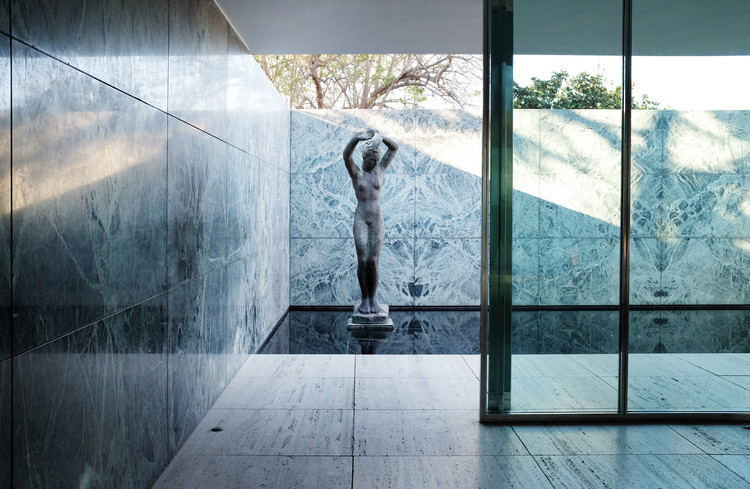
Ludwig Mies van der Rohe (27 March 1886 – 17 August 1969) is one of the most influential architects of the 20th century, known for his role in the development of the most enduring architectural style of the era: modernism. Born in Aachen, Germany, Mies' career began in the influential studio of Peter Behrens, where Mies worked alongside two other titans of modernism, Walter Gropius and Le Corbusier. For almost a century, Mies' minimalist style has proved very popular; his famous aphorism "less is more" is still widely used, even by those who are unaware of its origins.
Mies began to develop this style through the 1920s, combining the functionalist industrial concerns of his modernist contemporaries and an aesthetic drive toward minimal intersecting planes—rejecting the traditional systems of enclosed of rooms and relying heavily on glass to dissolve the boundary between the building's interior and exterior. The decade was bookended by his proposal for the Friedrichstraße skyscraper, an unrealized all-glass tower designed in 1921 which cemented his fame within the architectural avant-garde, and by his 1929 German Pavilion at the Barcelona Exposition (more commonly known as the Barcelona Pavilion) which remains one of his most well-known and popular works.
In 1930, Mies took over from Hannes Meyer as director of the Bauhaus—the school founded by and most commonly associated with its founder Walter Gropius—serving as its leader until it was forced to close in 1933 under pressure from the Nazi government. In 1932, the work of Mies formed a cornerstone of the Museum of Modern Art's exhibition on "The International Style" curated by Philip Johnson and Henry-Russell Hitchcock, an exhibition that not only reinforced Mies' role as a leader of the modernist movement, but also brought the movement itself to a wider, more international audience.
After the closure of the Bauhaus and the continued rise of the Nazis in Germany, Mies found work in his home country increasingly difficult. He eventually decided to emigrate to the United States in 1937, where he settled in Chicago and became the head of the Illinois Institute of Technology. During his 20 years at IIT, Mies developed what became known as "the second Chicago school of architecture," a style of simplified, rectilinear high-rise buildings exemplified by projects such as 860-880 Lakeshore Drive and the Seagram Building. Alongside this new skyscraper typology, he also continued to develop his low-slung, pavilion typology that he first tested in projects like the Barcelona Pavilion—with his entirely transparent Farnsworth House, completed in 1951, probably the most enduring example in the United States. At times, Mies was also able to combine both of these typologies into one composition, as he did in the three-building complex of the Chicago Federal Center.
Get to know some of Mies van der Rohe's most iconic projects:
Barcelona Pavilion (1929)

Farnsworth House (1951)

Seagram Building (1958)

Lafayette Park (1959)

Neue National Gallery (1968)

IBM Building (330 North Wabash) (1973)

Chicago Federal Center (Kluczynski Federal Building) (1974)













